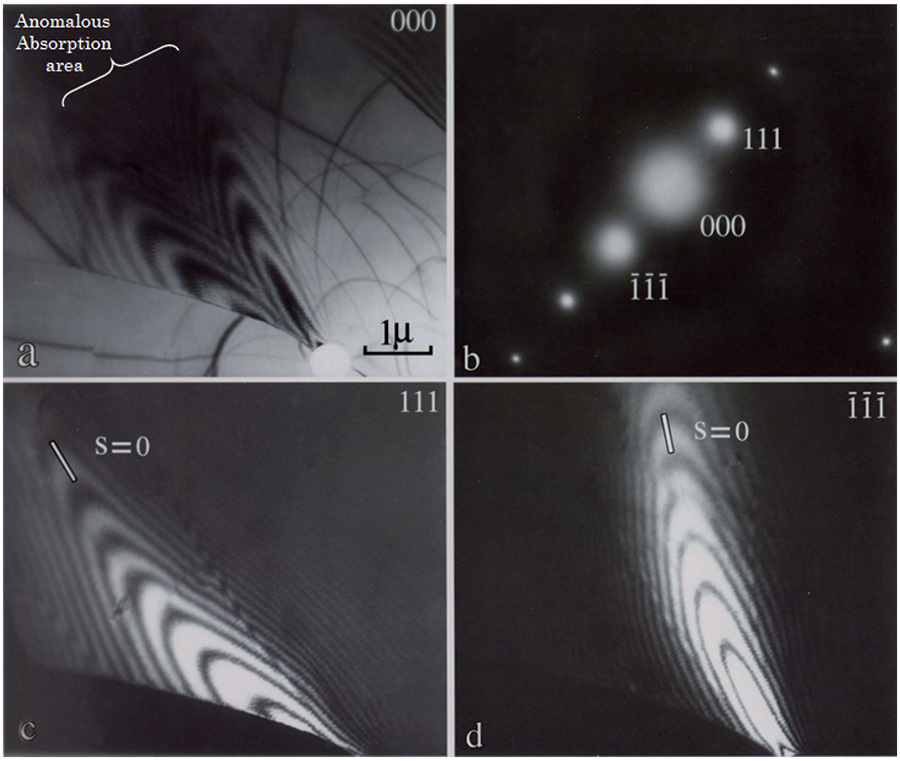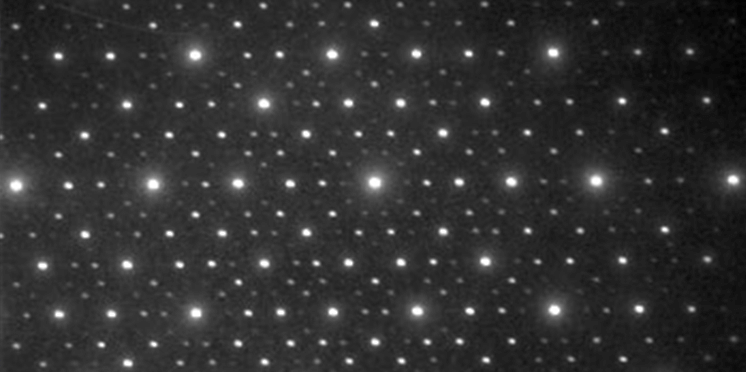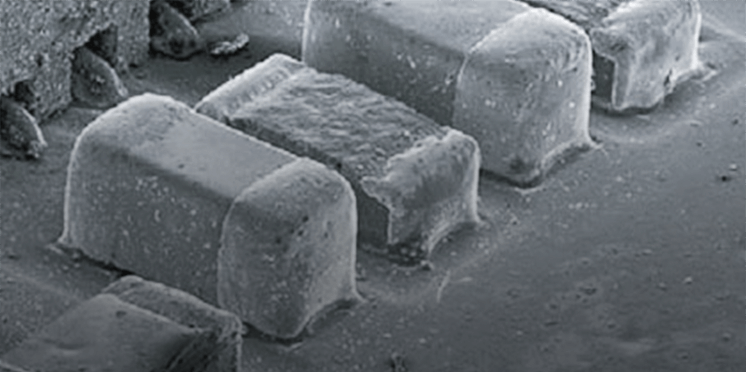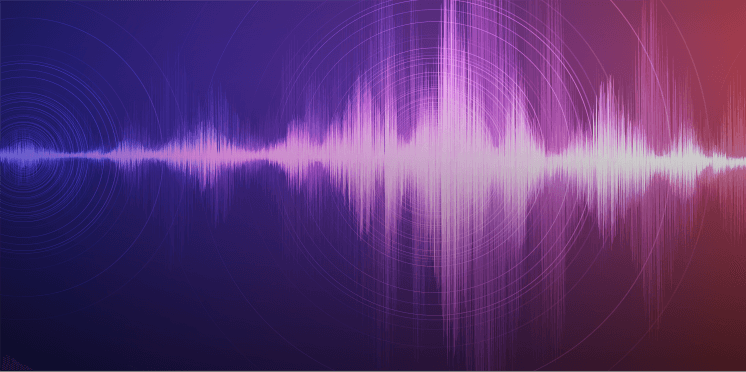異常吸収
異常吸収
anomalous absorption
[目次:理論(電子の散乱/回折/結像)]
結晶性試料に電子線を入射すると、動力学的回折効果によって、原子列の上を通る電子波と原子列の間を通る電子波ができる。原子列の上を通る波は平均的な吸収より大きな吸収を受け、原子列の間を通る波は平均より小さな吸収を受ける。このように平均吸収より大きいまたは小さい吸収を受ける現象を異常吸収という。異常吸収の主な原因は、入射電子が受ける熱散漫散乱である。

図1.(a) 明視野像、(b) 回折パターン、(c) 暗視野像、(d)
暗視野像、(d)  暗視野像、試料:Al単結晶薄膜。
暗視野像、試料:Al単結晶薄膜。
楔形の断面を持ち一様に曲がった単結晶薄膜を、次数の異なる反射(系統反射)のみを優先的に起こす入射条件のもとで観察すると、明視野像および暗視野像に縞模様(等厚−等傾角干渉縞)が観察される。この縞はタケノコ縞と呼ばれる。
暗視野像 (c)、(d)に示した励起誤差 “s = 0”に沿っての縞の強度変化は等厚干渉縞であり、“s = 0” と直交する方向に沿っての強度変化は等傾角干渉縞である。(c) および (d) の “s = 0” に沿う位置では、それぞれのブラッグ反射条件 をちょうど満たしている。
をちょうど満たしている。
電子回折の動力学理論によると、一つの回折波が強く励起されると、原子列の上を通る定在波と原子列の間を通る定在波が生ずる。原子列の上を通る定在波は原子列に強く衝突するため大きな吸収を受ける。原子列の間を通る定在波は原子列に対してあまり衝突しないので、吸収は弱い。
明視野像 (a)で、二つのタケノコ縞に挟まれた領域では、原子列の上を通る定在波が強く励起されるため、平均より大きな吸収を受けて暗く見える(異常吸収)。一方、二つのタケノコ縞の外側では原子列の間を通る定在波のほうが強く励起されるため、平均より小さい吸収しか受けず、明るく見える(異常透過)。タケノコ縞の中央 “s = 0” の位置では、原子列の上を通る定在波と原子列の間を通る定在波が同じ強さで励起されるため、干渉効果が最大になり強いうねり(等厚干渉縞)が生じる。暗視野像 (c)、(d) では、原子列の上を通る定在波と原子列の間を通る定在波が”s = 0” の両側で同じ大きさで励起されるため、タケノコ縞の強度は対称的になる。

図2.一様に湾曲し厚さが一様に変化する試料に現れる干渉縞(タケノコ縞)の模式図(左図)および、明視野像 (000) および暗視野像 (111, )のシミュレーション例(右図)。
)のシミュレーション例(右図)。
結晶が湾曲していない場合は、まっすぐな等厚干渉縞になるが、一様に湾曲した単結晶薄膜では、タケノコ縞になる。試料:Al、加速電圧:100kV、試料厚さ:10 ~ 500nm。
(シミュレーション画像提供: 東北大学 津田健治教授)
When an incident electron beam travels a crystalline specimen, two kinds of electron waves are produced due to the dynamical diffraction effect. That is, one electron wave runs on atomic columns and the other electron wave runs between atomic columns. The former electron wave undergoes a larger absorption than the average absorption, whereas the latter electron wave undergoes a smaller absorption than the average absorption. This phenomenon is termed "anomalous absorption." The main cause of the anomalous absorption is thermal diffuse scattering of incident electrons.

Fig. 1 (a) Bright-field image,(b) Diffraction pattern,(c)  dark-field image, (d)
dark-field image, (d)  dark-field image. Specimen: Al single-crystal thin film.
dark-field image. Specimen: Al single-crystal thin film.
When a uniformly bent and wedge-shaped single-crystal thin film is observed under an electron incidence condition where only different order reflections (systematic reflections) are preferentially excited, equal-thickness and equal-inclination fringes are created in the bright-field and dark-field images. Here, those unique shaped interference fringes are named “bamboo-shoot shape fringes”. Intensity variations, which are seen along the excitation error “s = 0” (shown in the dark-field images Fig. 1(c), (d)), correspond to equal thickness fringes. On the other hand intensity variations, which are seen in orthogonal direction to “s = 0” (Fig. 1(c), (d)), correspond to equal inclination fringes (bend contours). In the positions satisfying “s = 0”, each Bragg condition of  is exactly excited.
is exactly excited.
Based on the dynamical theory of Electron Diffraction, when one diffracted wave is strongly excited, two type standing waves are produced. One standing wave runs on the atomic columns and another wave runs between the atomic columns. The former wave collides strongly with the atomic columns, suffering a strong absorption. The latter wave collides less with the atomic columns, thus experiencing a small absorption.
In the bright-field image (Fig.1(a)), the area between the two bamboo-shoot shape fringes indicated with the description appear dark because the standing wave running on the atomic columns is strongly excited and experiences a larger absorption than the average absorption. This phenomenon is called anomalous absorption. On the other hand, the areas outside the two bamboo-shoot shape fringes appear light because the standing wave running between the atomic columns is strongly excited and experiences a smaller absorption than the average absorption. This phenomenon is called anomalous transmission. At the center of bamboo-shoot shape fringes, that is, at “s = 0”, the two standing waves running on and between the atomic columns are equally excited, and thus interference effects become maximum, creating strong beats (equal thickness fringes).
In the dark-field images (Fig.1(c), (d)), the two standing waves running on and between the atomic columns are equally excited with respect to the position “s = 0”, and thus, the intensities of the bamboo-shoot shape fringes become symmetric about the position “s = 0”.

Fig. 2 Schematic of the bamboo-shoot fringes created from a uniformly bent and wedge-shaped single-crystal thin film (left figure), and a simulation set of interference fringes appearing in the bright-field image (000) and the dark-field images (111, ). When a crystalline specimen is not bent, equal thickness fringes run parallel to the specimen edge, but in this specimen with a uniform bend, thickness fringes appear as bamboo-shoot shape fringes.
). When a crystalline specimen is not bent, equal thickness fringes run parallel to the specimen edge, but in this specimen with a uniform bend, thickness fringes appear as bamboo-shoot shape fringes.
Specimen: Al crystal, Accelerating voltage: 100 kV, Specimen thickness: 10 to 500 nm.
(Simulation: Courtesy of Professor Kenji Tsuda, Tohoku University)
関連用語から探す
説明に「異常吸収」が含まれている用語






